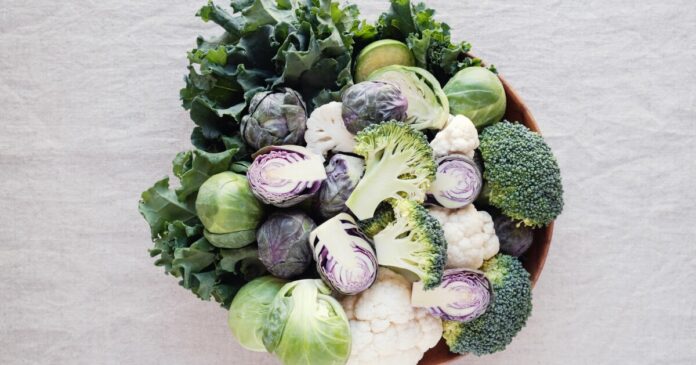There’s new evidence that cruciferous vegetables blunt spikes in blood sugar levels, which could be particularly important for those with type 2 diabetes or are at risk of developing the condition. It’s another feather in the health cap of these foods, which have been shown to fight colon cancer and high blood pressure.
In a randomized, controlled, crossover trial led by Edith Cowan University (ECU), 18 participants with an average age of 68 years consumed four serves of either cruciferous vegetables a day, across lunch and dinner, or root and squash vegetables (carrot, potato, pumpkin, sweet potato) for two weeks.
“Our participants wore glucose monitors throughout the study, so that we were able to measure blood sugar levels continuously throughout each two-week period,” said Emma Connolly, a researcher at ECU. “We found that, when participants consumed the cruciferous vegetables, they had less variable blood sugar levels compared to when they consumed the root and squash vegetables. We also noted that these participants had a smaller spike in sugar levels after the meals.
“A central goal of blood sugar control, particularly for people with diabetes, is to smooth out spikes and reduce variability in blood sugar levels throughout the day,” she added. “Stable blood sugar, with minimal peaks and less fluctuations is associated with better overall health and wellbeing.”
While it was a small study, the results showed that these vegetables – which include broccoli, cabbage, cauliflower and kale – had a meaningful impact on blood sugar levels, and improved glycemic control, providing far-reaching benefits when it comes to diabetes and cardiovascular health. The researchers noted that 541 million people across the globe are estimated to have poor gylcemic control.
What’s more, four serves is not a challenging amount to work into a daily diet – it’s around 300 g, or 1.5 cups of vegetables. Earlier research hypothesized that a natural plant compound, sulforaphane, was the driver of blood-sugar regulation, however, the ECU scientists say the exact mechanism, or mechanisms, involved is not yet well understood.
Last month, a study found that cruciferous vegetables had a significant impact in lowering the risk of colon cancer, which claims nearly a million lives annually around the globe. The researchers said eating just 20-40 g each day offered the most protection, with this amount reducing risk by 20%.
And last year, ECU researchers drew from data obtained from this same trial to assess other health markers, and found that the two-week cruciferous-vegetable plan had a significant effect on 24-hour brachial systolic blood pressure (SBP), compared with the control.
“Daily consumption of four serves of cruciferous vegetables over a two-week period resulted in reduced SBP in middle-aged and older adults with mildly elevated blood pressure compared with root and squash vegetables,” they wrote in the paper.
While a little goes a long way, a 2019 report from the Centers for Disease Prevention and Control found that, on average, only one in 10 Americans eat the recommended 2-3 cups of vegetables a day. In some states, such as Kentucky, that dropped to just 5.6% of adults who were consuming this amount – in other words, more than 94% of people in the state are eating far too little.
“Even more concerning is that cruciferous vegetables are among the least consumed vegetables,” said nutritionist Lauren Blekkenhorst, a researcher at ECU. “Adding vegetables like broccoli, kale, bok choy, gai lan, and cabbage to your meals most days could make a big difference to your health.”
While observational, the latest findings nonetheless demonstrate that cruciferous vegetables in particular have broad health benefits – but more research into the underlying mechanisms of these positive health outcomes is needed to understand the full story.
“Continued investigation will be crucial to determine how these vegetables can be effectively incorporated into dietary recommendations for improved blood sugar regulation and overall health management,” Connolly added.
Many people might avoid cruciferous vegetables because of their reputation for one undesirable side effect – flatulence and bloating – due to them being rich in fiber, a complex sugar known as raffinose, fructose and sulfur. Many compounds are not fully digested in the stomach and small intestine, so undigested carbohydrates are left to be fermented by gut bacteria. This process produces gas as a byproduct. (On the plus side, it means your microbiome’s microbes are enjoying a good feast.)
McGill researchers advise that cooking cruciferous vegetables can help break down some of the undigestible carbohydrates through heat, while blending – such as for a soup or smoothie – will physically break down the cell walls and fibers for easier digestion.
The research was published in the journal Diabetes, Obesity and Metabolism.
Source: Edith Cowan University


